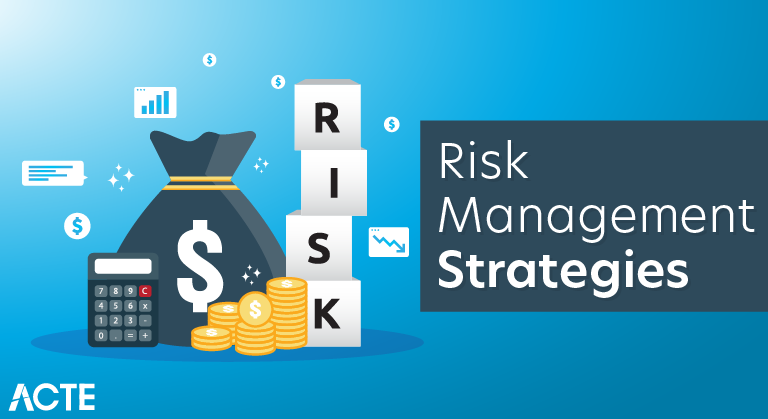Running a business comes with inherent risks, from financial uncertainties and market shifts to security threats and regulatory challenges. Without a solid risk management strategy, businesses leave themselves vulnerable to setbacks that can affect their bottom line, reputation, and long-term viability. This article breaks down the top 10 risk management strategies that can help companies minimize potential threats, safeguard their assets, and stay resilient in the face of adversity.
1. Conduct Comprehensive Risk Assessments
A foundational step in risk management is identifying potential risks and evaluating their likelihood and impact. Regular risk assessments allow businesses to categorize and prioritize risks, setting the stage for targeted mitigation efforts.
- Why It Matters: Knowing what risks exist helps you plan effectively and address them proactively.
- How to Do It: Review past incidents, industry trends, and vulnerabilities. Use qualitative and quantitative methods to assess the likelihood and potential impact of each risk.
2. Diversify Your Revenue Streams
Relying heavily on a single source of income can be a significant risk, especially if the market shifts or customer demands change. By diversifying revenue streams, companies reduce dependency on any one source and increase stability.
- Why It Matters: Diversification helps reduce the financial impact of a downturn in any one area of your business.
- How to Do It: Explore new products, services, or markets that complement your core business. Alternatively, consider adding multiple distribution channels to reach a broader audience.

3. Implement Strong Cybersecurity Measures
Cybersecurity threats, including hacking, phishing, and data breaches, pose significant risks for businesses of all sizes. Implementing robust cybersecurity practices protects sensitive data, maintains customer trust, and minimizes potential financial and reputational damage.
- Why It Matters: Cyber breaches can lead to significant financial losses and loss of customer trust.
- How to Do It: Use firewalls, anti-virus software, encryption, and multi-factor authentication (MFA) to protect data. Regularly train employees on cybersecurity best practices to minimize human error.
4. Develop a Business Continuity Plan (BCP)
Business continuity planning ensures your company can continue operations during a disaster or disruption. A BCP helps outline the steps to take to recover essential functions and restore normal operations quickly.
- Why It Matters: A well-prepared BCP can reduce downtime and prevent revenue loss during crises.
- How to Do It: Identify critical business functions and create a detailed plan for maintaining them in various scenarios. This can include contingency staffing, alternative supply chains, and emergency communication plans.
5. Secure Adequate Insurance Coverage
Insurance is a key component of risk management, offering financial protection against unexpected events. There are various types of insurance available depending on your industry, from general liability and property insurance to cyber insurance and professional liability coverage.
- Why It Matters: Insurance provides a financial safety net, allowing businesses to recover from losses and maintain stability.
- How to Do It: Assess the types of coverage that align with your business needs. Consult with an insurance expert to ensure your policy limits and coverage terms fit your risk profile.

6. Strengthen Employee Training Programs
Employees play a crucial role in managing and mitigating risks. Training programs equip staff with the knowledge and skills needed to handle various risk scenarios, from cybersecurity threats to workplace safety hazards.
- Why It Matters: Well-trained employees are more likely to follow protocols that protect the company from risks.
- How to Do It: Implement ongoing training in areas such as safety compliance, data protection, and emergency response. Include real-world simulations and regular refreshers to keep knowledge current.
7. Monitor and Manage Cash Flow
Cash flow is the lifeblood of any business, and mismanagement can lead to severe financial challenges. By regularly monitoring cash flow and creating forecasts, businesses can avoid liquidity issues and make informed financial decisions.
- Why It Matters: Proper cash flow management prevents financial shortfalls that could harm operations.
- How to Do It: Use accounting software to track income and expenses and develop projections. Set aside an emergency fund to handle unexpected expenses, and regularly review your financial position to stay proactive.
8. Establish a Crisis Management Team
A crisis management team (CMT) is responsible for leading the organization’s response to unforeseen events. This dedicated team coordinates response efforts, makes quick decisions, and communicates with employees, customers, and other stakeholders during emergencies.
- Why It Matters: A crisis management team ensures that everyone knows their role during high-pressure situations, reducing confusion and response time.
- How to Do It: Appoint a cross-functional team with members from different departments who have the authority to make decisions. Regularly train the team on crisis scenarios, communication protocols, and roles within the company.
9. Conduct Regular Audits and Compliance Checks
Regular audits help identify gaps in compliance and potential areas of vulnerability. Whether internal or external, these checks are essential for ensuring the company meets regulatory standards and operates within legal guidelines.
- Why It Matters: Non-compliance can result in costly fines, legal issues, and damage to the company’s reputation.
- How to Do It: Schedule regular audits of financial records, cybersecurity practices, safety protocols, and other key areas. Consider hiring third-party auditors for unbiased evaluations, and address any gaps or vulnerabilities discovered.
10. Foster a Risk-Aware Culture
Finally, cultivating a risk-aware culture throughout the organization encourages all employees to take ownership of risk management. When employees understand the importance of mitigating risks, they are more likely to identify and address potential issues proactively.
- Why It Matters: A risk-aware culture reduces the chances of oversight, as employees are more likely to report risks or suggest improvements.
- How to Do It: Encourage open communication and provide training to all levels of staff on recognizing and managing risks. Celebrate proactive risk management efforts and involve employees in regular discussions about improving safety and reducing risks.
Conclusion
In today’s dynamic business environment, effectively managing risks is essential for maintaining a competitive edge and ensuring long-term success. By employing these 10 strategies, businesses can reduce potential threats, safeguard their assets, and enhance their resilience against uncertainties. From strengthening cybersecurity measures to fostering a risk-aware culture, each strategy plays a vital role in building a more resilient business. Investing time and resources in risk management can save your company from costly disruptions and help pave the way for sustainable growth.
Frequently Asked Questions (FAQs)
1. What is risk management in business?
Risk management in business involves identifying, assessing, and taking steps to minimize risks that could negatively impact the company’s operations, finances, and reputation.
2. Why is a business continuity plan essential?
A business continuity plan ensures that critical operations can continue during a disaster or unexpected event, minimizing downtime and revenue loss.
3. What types of insurance should a business have?
Common types of insurance include general liability, property insurance, professional liability, cyber insurance, and business interruption insurance, depending on the industry.
4. How often should risk assessments be conducted?
Risk assessments should be conducted at least annually or whenever there are significant changes in the business environment, processes, or team.
5. How can a company foster a risk-aware culture?
Encourage open communication, offer regular training, and involve employees in discussions on risk management to help foster a risk-aware culture.
6. What role does cybersecurity play in risk management?
Cybersecurity protects the company’s digital assets and sensitive information from cyber threats, reducing the risk of data breaches and financial loss.
7. Who should be on a crisis management team?
A crisis management team should include members from key departments like operations, communications, HR, and legal, who have decision-making authority and crisis response experience.
